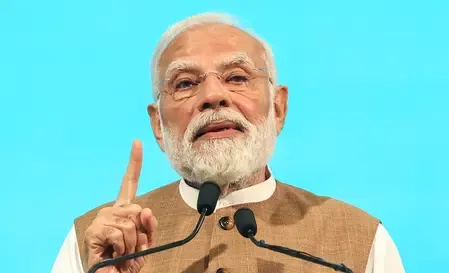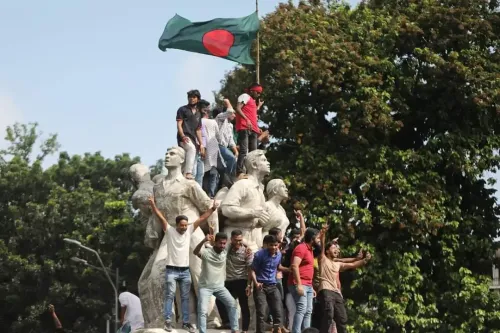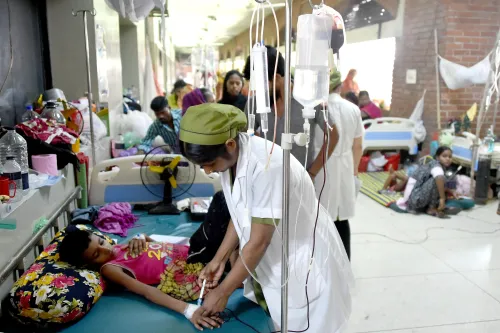How is India Maintaining Calm Amid South Asia's Turmoil?

Synopsis
Key Takeaways
- Economic Resilience: India maintains strong foreign-exchange reserves.
- Growth Rate: The economy shows steady growth between 6-8%.
- Reforms Lead to Stability: Historical reforms have paved the way for today's economic landscape.
- Service Sector Growth: IT and outsourcing contribute significantly to GDP.
- Optimistic Youth: Indian youth remain hopeful despite challenges.
New Delhi, Nov 9 (NationPress) From Kathmandu to Karachi, South Asia is experiencing significant unrest. In Nepal, protests led by the "Gen Z" have emerged as a response to inequality and political elitism, while in Bangladesh, a student-led movement last year successfully ousted former Prime Minister Sheikh Hasina after a 15-year tenure.
Sri Lanka's economic collapse in 2022 forced President Mahinda Rajapaksa to flee, and Pakistan is still entangled in political instability and facing another IMF bailout. However, amidst this chaos, India's stability stands out, as noted in a report by The Economist.
The report emphasizes that despite facing challenges such as punitive trade tariffs from US President Donald Trump regarding Russian oil purchases and a brief military skirmish with Pakistan, India's economy has demonstrated remarkable resilience.
With foreign-exchange reserves nearing $700 billion—sufficient to cover 11 months of imports—and a steady growth rate of 6-8 percent, India appears as a tranquil haven in a stormy region.
This tranquility was not always guaranteed.
Since gaining Independence, India has confronted numerous balance-of-payments crises—from the 1965 war and drought to the 1991 Gulf War, which necessitated airlifting gold to secure loans.
Reforms initiated by then-Finance Minister Manmohan Singh transformed India’s economy and dismantled the "licence raj," paving the way for the current stability.
As recently as 2013, India was categorized among the "fragile five" economies susceptible to global shocks.
Since then, it has reformed its banking sector, reduced bad loans, and practiced fiscal discipline, as highlighted by The Economist.
The budget deficit has decreased from nine percent during the pandemic to under five percent, with plans to reduce debt-to-GDP from 57 to 50 percent by 2031.
India's previous dependence on oil, once a significant vulnerability, has been alleviated through inexpensive Russian imports, increased refinery capacity, and ethanol blending initiatives.
Service exports, primarily in IT and outsourcing, now constitute 15 percent of GDP, providing a buffer against external shocks. Nevertheless, challenges persist.
Graduate unemployment remains around 30 percent, and caste-based job reservations generate frustration.
Yet, unlike its neighbors engulfed in protests, India's youth appear to be exercising patience, according to the report.
Surveys indicate that while they are moderately dissatisfied today, they maintain hope for the future.
In a region marked by volatility, this optimism—rooted in visible growth and economic advancement—may serve as India's most potent stabilizer.









